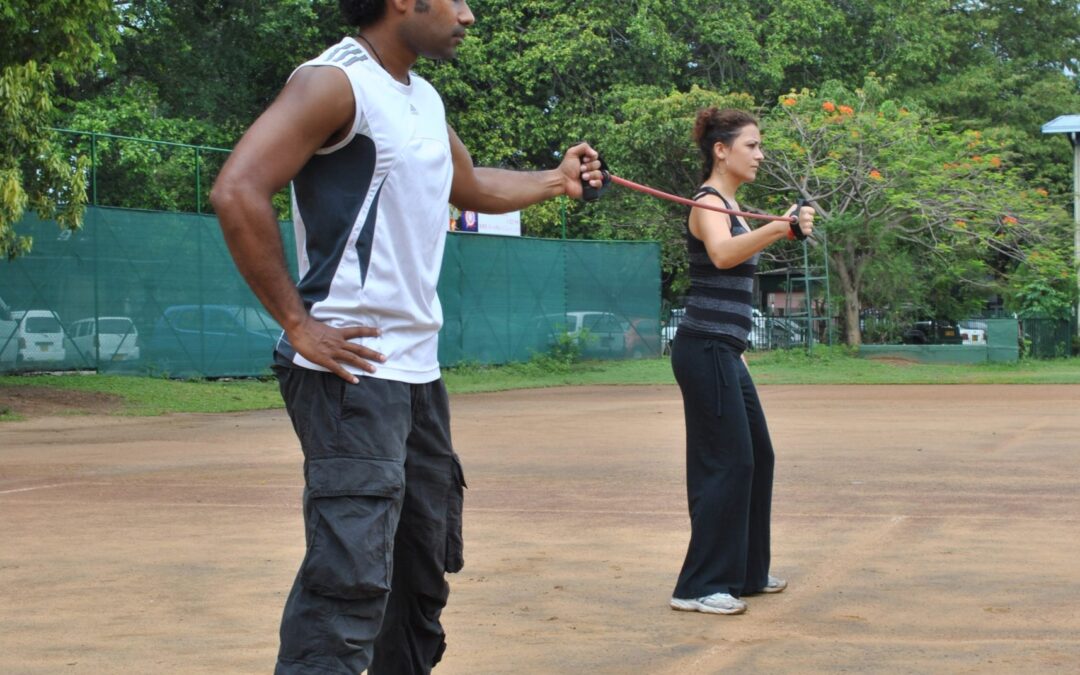Fitness is a state of mental, physical, and social health. It originates from the body, mind, and social environment.
Fitness is not a unilateral endeavor. It derives from the body, mind, and social surroundings. The social environment is crucial because it can support and encourage healthy behavior. whether you are interested in general fitness, rehabilitation, health, aesthetics, or sports performance
These are the components of fitness:
- Physical fitness: The capacity to move and utilize one’s strength.
- Mental health: The state of being in healthy emotional health
- Social health: The capacity to engage with others without experiencing awkwardness or shyness Physical, mental, and social well-being are the components of fitness. It originates from the body, mind, and social environment.
Components of fitness are the many elements of exercise and diet that, when combined, produce the best results. It is essential to keep in mind that fitness components can encompass a great deal more than just exercise and nutrition. It may also involve a healthy lifestyle, restful sleep, stress management, and other elements that contribute to your overall health.
In this post, we will cover physical fitness for general health, fitness, and leisure sports. Please visit tennisbpm.com and strengthattack.com for sports-specific articles.
6 Components General Fitness / Exercise program
For physical activity, rest, and food, a good fitness program should include the following:
- Cardiovascular and Respiratory (heart, lung, and circulatory benefits)
- Resistance exercise (musculoskeletal)
- Flexibility (e.g., increased range of motion, etc.)
- Functional Exercises (movement-based)
- Rest (mental and physical)
- Nutrition (well-balanced)
However, the majority of people only consider one of these benefits, ignoring the others that can make the difference between a successful fitness program and one that fails.
Fitness has advanced significantly during the previous few decades. No longer does it include going to the gym and using an exercise machine. There are a lot of fun and useful ways to stay in shape these days, like taking a dance class, rock climbing, or just playing outside with your kids.
If you are willing to change your daily diet and long-term approach to fitness, you will be well on your way to reducing stress, getting more energy, and improving your health in the long run. In addition to eating “clean” and engaging in a variety of regular physical exercises (such as cardio, weight training, sports conditioning, etc.), you can boost your chances of long-term success by performing these activities under the supervision of a fitness professional.
1) Cardiovascular/Respiratory Exercise:
Purpose: Getting oxygen to your working muscle while removing your metabolic waste products, thereby improving your heart, lung, and circulatory functions
The muscles need oxygen to function, which is transported via the blood. The cardiovascular system is a series of interconnected organs that work together to pump blood through the body and distribute it throughout the tissues.
The cardiovascular system is made up of five organs that are all connected and work together to move blood through the body. The heart, lungs, and blood vessels are the key players in this system.
Duration: Ideally, 20–30 minutes. If you were being watched by a doctor, you might have to change how long you work out. Consider your fitness level (duration and intensity should be modified) before beginning exercise.
Read our other articles on our blogs livefitonline.com , tennisbpm.com or strengthattack.com
Health Benefits: Cardiovascular exercise can help you reduce your LDL (bad) cholesterol level, prevent heart and lung disease, lower your blood sugar level, and reduce your risk for hypertension.
Common Activities: Swimming, aerobic classes, cycling, walking the dog, hiking, and evening or morning walks with your family and friends.
2) Strength Training:
Purpose: The goal is to improve the way your muscles and bones work by building up your strength, power, and muscular endurance.
A strength training program should include a mix of compound and isolation exercises. Compound exercises, like the squat and the bench press, work several muscle groups at once. Isolation exercises like bicep curls work only one muscle group. These can be incorporated with your own body weight, a partner, bands, or a variety of other equipment or modalities. Some strength-training exercises, like lifting a barbell from the ground to your chest, are done in a more ballistic way. Lifting the barbell from the ground may require the use of two hands. When you get close enough, one hand will slide underneath and go around your back as you “catch” the weight. This technique is more explosive and less controlled than a traditional deadlift because of how quickly it’s done.
As Strength training is vast subject we shall discuss in micro blogs in future
Duration: Resistance training (under supervision) with the appropriate amount of proper weight, rounds, and repetitions (reps) of each type of exercise (a set), as well as adequate rest for a healthy adult, e.g., 3 sets of 6-10 repetitions for each major muscle group with 30 seconds rest in between rounds is ideal for general fitness .
Strength training can help you not only prevent and treat osteoporosis and other forms of arthritis, muscle imbalances, and injuries, but it can also make it easier and better for you to do the things you do every day.
Common Activities: Sports activities (like lifting heavy weights and other strength training), carrying your kids, moving furniture, lifting heavy objects, etc. Strength training protocols may vary in athletic training for different sports; we will cover them in a subsequent follow-up article in the near future.
3) Flexibility:
Purpose: The purpose of this article is to educate on how to improve your ability to flex, i.e., extend and rotate around your joints, without injury or restriction. Inflexible muscles can lead to poor posture and injury.
Read our blogs on the subject matter
Duration: In general, flexibility exercises can be done in the form of static stretching (without movement), ideally holding each major muscle to the point of stretch “NOT TO THE POINT OF PAIN” for a time limit of 40 to 60 seconds, and then repeated one to two times.
Regular flexibility exercises will improve your range of motion and freedom of motion, as well as your ability to perform daily activities with ease and reduce and minimize muscle tension.
Common Activities: Reaching for an object upwards, bending down, sudden turning, and almost any activity
4) Functional Training:
Purpose: Enhance daily activity (walking, lifting, carrying, etc.) or specific activity (sports-specific, physical rehabilitation-specific, etc.).
Duration: Can be repeated as often as you require for a specific task without over-taxing your body in a specific way to aid your intended final tasks (e.g., while playing tennis on a clay surface tennis court, you might rally for an average of 15 seconds, rest for 15 seconds, and repeat the cycle again with the same activity until you have achieved a comfortable level of physical challenge.
Benefits: Not only does regular functional training lower your risk of activity-related injury, but it also increases your productivity in a specific task while putting less physical strain on your body.
Common Activities: household chores, playing with kids, cooking, sports, and other physical activities, e.g., anything from recreational physical activities to competitive sports to post-rehabilitative corrective exercises and sports conditioning.
5) Rest:
Purpose: To recover from mental and physical stress.
Duration: Allocate one to two hours a day to relax and get adequate sleep. Also, set aside one day a week to totally relax.
Benefits: Making sure your body gets enough rest every day will help prevent and manage mental and physical stress, which has been linked to certain cancers, high blood pressure, heart disease, problems with the digestive tract, and stress fractures.
Common Activities: Regular massages, Jacuzzi or spa therapy, listening to music, spending time outdoors in a natural and calm setting, many forms of meditation, etc.
6) Nutrition:
Purpose: To maintain and regulate bodily functions.
Key components are proteins (which repair body cells), carbohydrates, and fat (which provide a source of energy). Vitamins and minerals (which regulate bodily functions)
Benefits: Maintaining proper and balanced nutrition can help not only prevent a variety of diet-related diseases and provide adequate energy for your bodily functions, but it can also help with physical injury healing.
To summarize, and again as previously stated at the beginning of my article, you can further ensure your long-term success if you not only practice “clean eating” and a balance of a variety of regular physical activity (e.g., cardio, strength training, sports conditioning, etc.), but also if you do so under the proper supervision of a trained certified fitness


